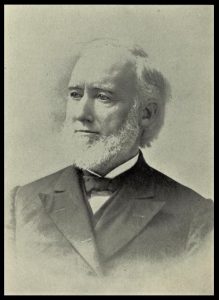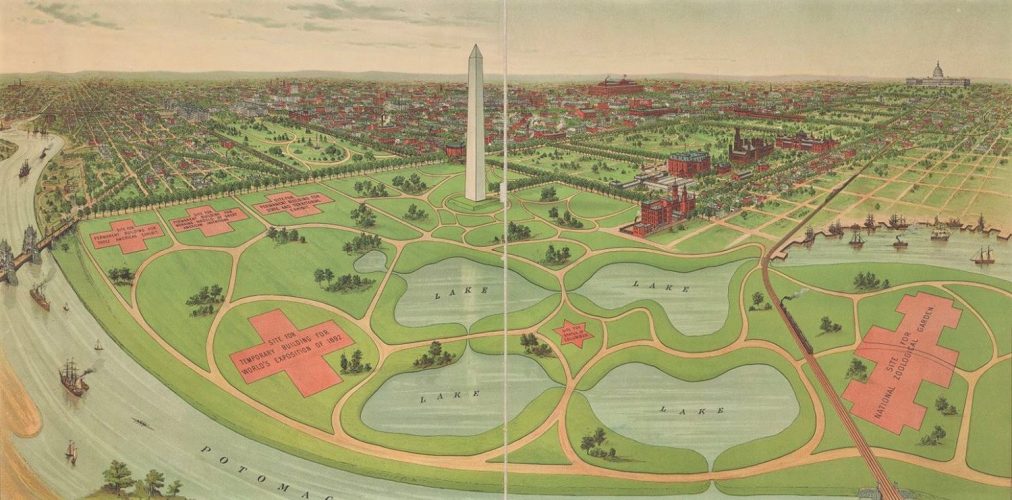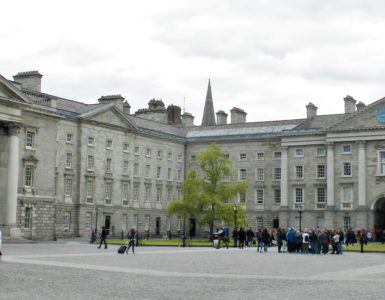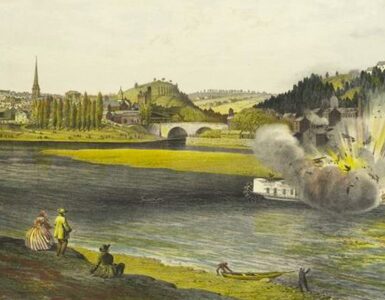 As is sometimes the case when searching the web for information, I come across an interesting article unrelated to the topic of my search and such is the case for this post. A few excerpts from a local newspaper relevant to the attempt in 1891 to revise the Westminster Confession are transcribed below. In the end, none of the twenty-eight overtures for revision (list in the PCUSA Minutes, 1892, pp. 130-37) received the necessary two-thirds vote for change (Minutes, 1893, p. 198). Revision would continue to be debated until 1903 when the Confession would be modified with eleven overtures adopted (Minutes, 1903, pp. 15-18, 123-128). To read the entire article online or download a PDF of the page see, The Pittsburgh Dispatch, Monday, August 24, 1891, page 9, which is available through Pennsylvania Newspaper Archive, https://panewsarchive.psu.edu.
As is sometimes the case when searching the web for information, I come across an interesting article unrelated to the topic of my search and such is the case for this post. A few excerpts from a local newspaper relevant to the attempt in 1891 to revise the Westminster Confession are transcribed below. In the end, none of the twenty-eight overtures for revision (list in the PCUSA Minutes, 1892, pp. 130-37) received the necessary two-thirds vote for change (Minutes, 1893, p. 198). Revision would continue to be debated until 1903 when the Confession would be modified with eleven overtures adopted (Minutes, 1903, pp. 15-18, 123-128). To read the entire article online or download a PDF of the page see, The Pittsburgh Dispatch, Monday, August 24, 1891, page 9, which is available through Pennsylvania Newspaper Archive, https://panewsarchive.psu.edu.
Mentioned in the article is Edward Dafydd Morris who was the eldest child of David E. and Ann (Lewis) Morris. He was born in Utica, New York, October 31, 1825. He studied while working as a clerk until he entered Yale where he graduated in 1849, then he prepared for the ministry at Auburn Theological Seminary completing the divinity program in 1852. His ministerial calls included Second Church, Auburn, and Second Church, Columbus, Ohio, but he left pastoral service in 1867 to become Professor of Church History and Church Polity at Lane Theological Seminary in Cincinnati, Ohio. In 1874 he was installed the Chair of Systematic Theology which was his position at the time of the events mentioned in the Dispatch article. He was moderator of the General Assembly of the Presbyterian Church when it met in Cleveland, 1875. He died November 21, 1915. Hamilton College honored Morris with the Doctor of Divinity in 1863. Some of his publications are, Thirty Years in Lane and Other Lane Papers, 1897 (occasioned by his retirement from the seminary and it provided the portrait); Ecclesiology: A Treatise on the Church and Kingdom of God on Earth, 1898; Theology of the Westminster Symbols. A Commentary Historical, Doctrinal, Practical, on the Confession of Faith and Catechisms and the Related Formularies of the Presbyterian Church, 1900; and A Book of Remembrance, The Presbyterian Church, New School, 1837-1869 An Historical Review, 1905.
Morris believed his view of confessional revision was moderate when compared to the extreme simplification proposed by Charles A. Briggs, and the “extreme conservatism” of B. B. Warfield (The Presbyterian and Reformed Review, Vol 7, July 1891, pp. 495-499). The “pamphlet giving in detail the hitherto secret proceedings of the committee” mentioned in the Dispatch was not located for bibliographic information. Despite the comment in the article’s title, “Eulogy of the Westminster Divines,” the Westminster Confession is not dead over 130 years later.
The header is from the New York Public Library Digital Collection and is described as “Birdseye view of the national capital, including the site of the proposed World’s Exposition of 1892 and Permanent Exposition of the Three Americas.” In 1893 when the tally for revision votes from the presbyteries was made, the General Assembly met in Washington, D. C., with Willis G. Craig the moderator.
Barry Waugh
CHANGING A CREED
Doctor Morris Fully Explains
the Work of the Revision Committee.
SOFTENING OF DOCTRINES.
The Idea of Creation Remodeled
as to Conform to Science.
PRINCETONS GREAT OPPOSITION
To Many of the Changes, and Dr. Briggs’
Theory Squarely Met.
EULOGY OF THE WESTMINSTER DIVINES
New York, Aug. 23. Presbyterians will be greatly surprised by the appearance this week of a pamphlet giving in detail the hitherto secret proceedings of the committee engaged in the revision of the Westminster Confession of Faith. The pamphlet is by a member of the committee, the Rev. Dr. Edward D. Morris, Professor of Lane Theological Seminary, Cincinnati, who is unquestionably the strongest man in the revision movement. The reasons for each proposed change in the famous Calvinistic document are given with remarkable candor and clearness by Dr. Morris. Up to this time not a word has come from the revision committee, beyond the provisional report now before the Presbyteries for approval. Each one of the half-hundred members has refrained from speaking of what transpired in the prolonged and frequent sessions of the committee.…
The proofs of the inspiration of the Bible first received attention. The committee considered that the general evidences for the Bible were not specially discussed during the struggle of the Reformation. As a consequence the confessional proofs of the Bible, being altogether internal and appealing as such chiefly to the believer, have been found to be inadequate to meet the needs of an age like our own, in which the divineness of the Bible is at every possible point assailed. To meet these ends the arguments from prophecy, miracle and Biblical history were introduced.…
Referring to the criticisms excited by the report, Dr. Morris finds two extreme positions, against which the revision movement should be protected. The first is that which decries against all revision and clamors for a new and shorter creed. This is the position attributed to Dr. Briggs. It is described by Dr. Morris in this language:
It is easy to profess a special knowledge of our symbols and a high degree of loyalty to them at one moment, and in the next to explain away their plainest teachings, and to propose some speculative substitutes in their places, easy, in a word, to claim the name of Calvinist and at the same time disparage or reject what the name specially represents to the minds of common men.
The second dangerous element referred to is Princeton, which Dr. Morris describes as
an extreme conservatism, which must not be permitted to stand in the way of an honest, faithful, adequate revision of tho church symbols.
In a foot note in this part of the pamphlet Dr. Morris attacks Dr. Warfield, Professor of Systematic Theology at Princeton, who has already opened the campaign against adoption of the report in an article in the Presbyterian Review [actually, The Presbyterian and Reformed Review].…
[The newspaper article occupies 2 3/4 columns of the page.]





